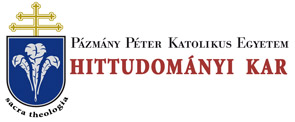Folia Canonica 5. (2002)
STUDIES - Szabolcs Anzelm Szuromi: The Development of the Clerical Orders prior to the Discipline of Statuta Ecclesiae Antique (5th Century)
96 SZABOLCS ANZELM SZUROMI which is classified into three orders, i. e. : bishop, priest, deacon.6 Moreover, we know also from Justin (A.D. 150) that in Rome the deacon took the Holy Eucharist to those faithful who lived far from the community of the Church and were not able to be present at Mass. I. The degrees of Holy Orders in the writings of the fathers of the Church and in the early councils The degrees of Holy Orders (ordines) meant various types of service in the early Church. They were not arranged in one unified hierarchical order.7 But we know Tertullian’s opinion (after t220), which was explained in De praescriptione haereticorum. Here he criticized the lack of clarity in defining the different orders. He distinguished orders of serving (these persons should not be called ’priests’) from the orders which give a character to the persons. Pope Innocent I (402-417) spoke of higher and lower orders. The “lower” orders were later named “minor orders”,8 which were the following: acolytus — acolyte —,9 10 exorcista - exorcist —,10 lector,11 ostiarius— janitor—,12 and subdeacon, who assisted the deacon.13 We can follow the institutional development of these orders 6 Letter of St. Ignatius to the Ephesians, cf. P. Th. Camelot (ed.), Ignace d'Antioche, Polycarpe de Smyrne. Lettres. Martyre de Polycarpe (Sources Chrétiennes 10), Paris 1969. 56-79. 7A.Cf. Lemaire, „L’Église apostolique et les ministères” in Revue droit canonique 13 (1973) 19-46. 8Kurtscheid, Historia (nt. 5), 46-50. 9 6 acolytes were in Rome in the age of Pope Cornel (251-253). 10 See Council of Laodicea, canon 24 „Quod non oporteat sacro ministerio deditos a presbyteris usque ad diaconos, et reliquum ecclesiasticum ordinem, id est usque ad subdiaconos, lectores, cantores, exorcistas et ostiarios, et ex numero continentium et monachorum, ingredi tabernas.” P. P. Joannou, (ed.), Les Canons des Synodes Particuliers (Discipline générale antique, IVe-IX° s. 1/2), Grottaferrata 1962. 131. 11 See Traditio Apostolica c. 11. „Lector (a vayvcôaxr|ç) instituetur (KaOiaxaaOai.) cum episcopus dabit ei librum, non autem imponetur manus super eum.” B. Botte, (ed.), Hippolyte de Rome, La tradition apostolique. D’après les anciennes versions (Sources Chrétiennes 11), Paris 1968. 66. 12 See Constitutiones apostolicae IL 26. 3. ,,'Ouxoi yâp ùpwv sicnv oi àpxtepEÎç- ói ôè iepsîç ùpûv ói TtpeaßüxEpoi, Kai ói Àeîxai ûpûv ói vûv ôictKovoi Kai ói àvayivcôaKOVXEÇ ùpîv Kai ói wôol Kai ói nuÀwpoi, ai ôkxkovoi úptbv Kai ài XhP“1 KC£l <*i napdévoi Kai ói óptfiavoi úpwv.” M. Metzger (ed.), Les constitutions apostoliques (Sources Chrétiennes 320), I. Paris 1985. 237. 13 See Council of Elvira, canon 30. „Subdiaconos eos ordinari non debere qui in adolescentia sua fuerint moechati, eo quod postmodum per subreptionem ad altiorem
